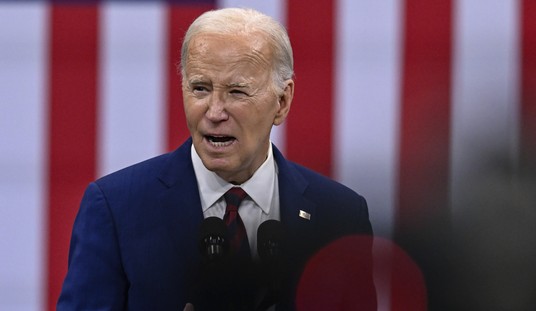Problems in society are rarely solved by Washington bureaucrats yet they seem to have taken the adage, ‘if at first you don’t succeed, try, try again’ to heart. Accordingly, the government is addressing the nation’s growing obesity epidemic with a regulation: Section 4205, the menu labeling provision attached to ObamaCare meant to “aid consumers in selecting more healthful diets.” As currently written, however, the regulation will likely have job-killing effects and result in little, if any, significant reductions in obesity rates and/or improved health.
The provision requires chain restaurants with 20 or more locations, including franchises and perhaps some grocery stores, to post calorie information for all products on in-store menu boards. According to the Food Marketing Institute (FMI), a national standard was supported by the restaurant industry as a way to “preempt the patchwork of various state and municipal menu labeling laws.” The rules designed by the FDA, however, eschew more common sense approaches to implementing the law. The American Pizza Community, a coalition of pizza franchises, and FMI, the association representing America’s grocery stores, are cognizant of the effects the regulation will have on the industries they represent and thus, have advanced a legislative solution: the Common Sense Nutrition Disclosure Act.
Lynn Liddle, executive vice president of communications, legislative affairs and investor relations for Domino’s Pizza, tells Townhall that the Common Sense Act would, as its name suggests, make a number of sensible changes. For example, since 90 percent of pizza customers get their food delivered, small businesses shouldn’t be subjected to putting calorie information on menu boards in stores that most people will never step foot in. As the bill addresses, these types of restaurants should be allowed to provide a remote-access menu. The ability to use an online menu would also alleviate the burden of putting calorie information for countless pizza combinations on a menu board -- Domino’s alone has 34 million pizza combinations (they did the algorithm), which would be impossible to display in stores anyway. The FDA’s rules also require the signage to display calorie ranges for a whole pizza, forcing the consumer to do the math for individual slices. Liddle says that in their stores in New York City where a similar law is in place, most people either didn’t look at the menu or they thought the calorie range was a “coupon code or something.” Instead, the bill calls for labeling by the serving size, thereby making it easier for customers to understand.
Recommended
For the pizza community, estimates for the cost of signage reach up to $4,700 per year depending on how often products are updated. Despite being part of a big brand name like Domino’s Pizza, the cost will be incurred by the franchise owners, which Liddle says are mom and pop operations. The nearly $5,000 is an added expense against marginal profits, she says, which doesn’t include the uncertainties associated with future costs of food, minimum wage increases and the possibility of more regulations.
“You can only ask the consumer to pay so much,” she explains. “People like pizza because it’s good and it’s a value. You can feed a family of four for $25 bucks or under. So that’s one of the attractions to pizza and so we don’t want to raise prices to our customers, and truly, we can’t. So what does it mean? It means they’ll hire fewer people, it will mean that some stores will close.” Plain and simple, the franchise owners will not be able to afford additional cost burdens.
In a truly unprecedented move and despite the fact that 95 percent of what’s in a supermarket is already labeled, grocery stores may become subject to the regulation as well because of the language FDA uses in its proposed rule: “restaurants and similar retail food establishments.” Again, if the provision is implemented as written, “It’s gonna have a huge impact on whether they have to scale back a store. In this economic environment, they’re having trouble keeping stores open period…or scale back fresh offerings,” FMI’s director of government relations Robert Rosado explains. “It’s silly when literally you take produce and just because you cut it then that triggers you being in this thing. It’s very counter-intuitive.” With already high commodity and energy costs, the internalization of expenses has gone as far as it can, he adds.
And what about the research showing menu labeling helps reduce obesity rates and increase overall health? FMI’s Erik Lieberman writes:
“It has been estimated by industry that the costs of extending menu labeling to supermarkets will exceed $1 billion in the first year of compliance alone, and hundreds of million of dollars annually thereafter. Meanwhile, the evidence that menu labeling has any significant impact on public health is scant. Indeed, of the studies FDA cites in the rule, most demonstrate that menu labeling has little to no effect on purchasing habits. Furthermore, no study shows any link to reduction of obesity rates, the purported benefit which FDA used to justify the menu labeling regulation.”
APC and FMI are not asking that the regulation is placed on the chopping block. Through the Common Sense Act, however, they are pushing a less burdensome approach.
“On behalf of the pizza industry…we just want to do what we do best,” Liddle says. “We want to make pizza…we don’t really want to be in Washington. We’re doing it reluctantly to protect our small business people that are involved in this and we want to do the right thing for the consumers.”
Liddle suggests people write letters to their representatives asking them to co-sponsor the bill and help move it along in the lame duck session of Congress.

























Join the conversation as a VIP Member